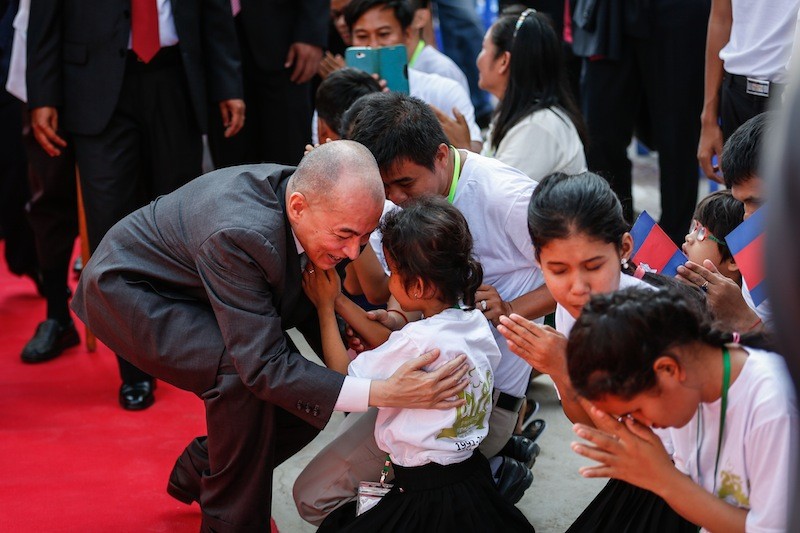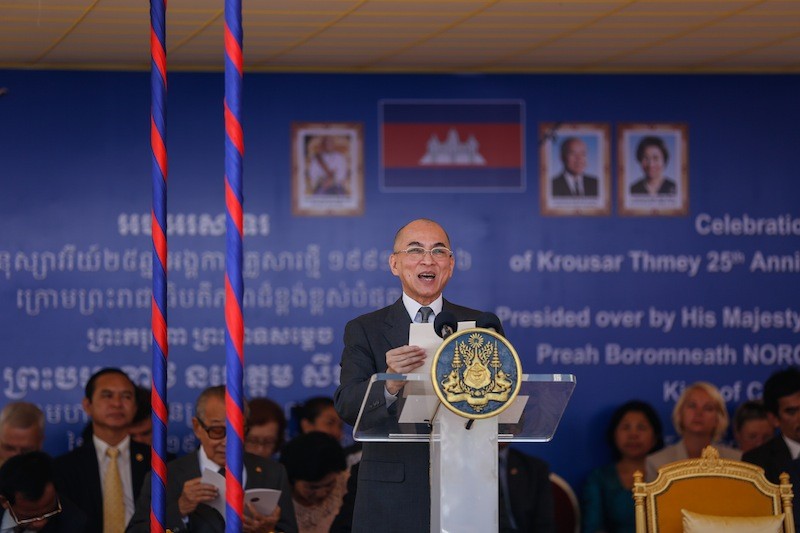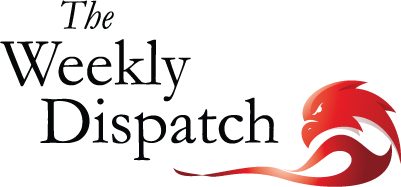In 1991, a blind boy arrived at the orphanage that Benoit Duchateau-Arminjon had just set up in a refugee camp for Cambodians in Thailand.
When the orphanage moved to Phnom Penh in 1993, the boy wanted to know why he could not go to school. Mr. Duchateau-Arminjon had to explain that there was no school for blind students in Cambodia, but eventually promised to change that.

The Frenchman’s organization, Krousar Thmey, or New Family, would not only go on to open specialized schools for blind and deaf students, it also created the first Khmer braille writing system and developed a comprehensive Khmer sign language.
This week, 25 years after Krousar Thmey was born, it is handing over its five schools—plus the tools and expertise its staff developed over decades—to the Cambodian government.
“It’s a gamble, but a calculated one,” said Auray Aun, general-director of Krousar Thmey.
“If we don’t [turn the program over to the government], we will have done good work, supporting 1,000 or so kids over 25 years,” he said. “But what would have been the effect of our program in the country?”
According to a memorandum of understanding that came into effect on Wednesday—marked by a ceremony presided over by King Norodom Sihamoni at the organization’s school in Phnom Penh’s Sen Sok district—the transfer process will span four years, with Krousar Thmey serving as technical adviser.
“Our global objective, our mission, is to help integrate blind and deaf children into Cambodian society,” Mr. Aun said.
The vision of a public school system that treats blind and deaf students as equal to their peers—based on the model devised by Krousar Thmey—is shared by the country’s education minister, Hang Chuon Naron.
“These children study together with other children: They are not separated,” the minister said. “They go to public schools in the morning. And they go to the special schools in the afternoon.”
Mr. Duchateau-Arminjon said the process of moving Krousar Thmey’s schools into the public education system began in 2011, when its teachers obtained the status of Ministry of Education staff.
“For years, we have cooperated with [the state-run] teachers’ school…so that future teachers can realize that, for us, this is not special education for special people,” Mr. Duchateau-Arminjon said.
“It is education according to the national curriculum adapted so that blind children can study in braille, and deaf students can adapt to it with sign language.”
Some Krousar Thmey students have not only completed high school, but have gone on to university. Its first blind student obtained a university diploma in 2010, followed by the first deaf university graduate in 2014.
Over the years, Krousar Thmey won several awards including Unesco’s Wenhui Award for Educational Innovation in 2010. Last year, Neang Phalla, one of its program coordinators in education for the blind, was among the 10 finalists for the Global Teacher Prize.

King Norodom Sihamoni speaks during Krousar Thmey’s 25th anniversary celebration in Phnom Penh on Wednesday. (Siv Channa/The Cambodia Daily)
The organization’s five schools—two in Phnom Penh, and one each in Siem Reap City, Kompong Cham City and Battambang City—will continue teaching students and also become specialized teacher training institutions.
There are no reliable figures for the number of blind or deaf children in the country. The World Bank and World Health Organization estimate that 15 percent of the population have some form of physical disabilities, with some 320,000 having severe disabilities such as blindness or deafness.
According to Krousar Thmey’s data for 2015, the NGO’s staff of 250 cared for 2,600 young people through its various programs in 14 towns and provinces. (The organization will continue to operate child protection programs and projects to preserve and develop traditional arts.)
Out of its budget of $1.7 million, around $1 million was used for the schools, funding that will come from government coffers in the coming years.
“Funding is more and more difficult to find,” Mr. Duchateau-Arminjon said. “It is increasingly hard to convince donors to give to a country, Cambodia, where one sees traffic jams of Lexuses, of huge cars.”
“It’s up to Cambodians to, progressively, take charge of [funding] Cambodia’s infrastructure,” he added.
The agreement between Krousar Thmey and the government suggests expanding existing programs by implementing a nationwide policy to educate disabled children, starting with the creation of an “inclusive education department” within the ministry or a directorate general.
In view of the Education Ministry’ many challenges and limited resources—its budget is steadily increasing but remained at $497 million this year, spread over 12,000 schools with a staff exceeding 100,000—its ability to integrate schools for blind and deaf students may seem like a stretch.
Yet Mr. Chuon Naron is confident that his ministry is up to the task. “The Ministry of Education is committed” to this program, he said.
Mr. Duchateau-Arminjon shared the minister’s optimism.
“There will be adjustments, there will be changes,” he said. “Some things will probably be done better, some things done less well, but the goal is that this continues and enables Cambodian children to get an education and have a future.”




